
Andrew Brenner, MD, PhD, stated that rhenium obisbemeda elicited similar results in leptomeningeal disease as it did in recurrent glioma.

Your AI-Trained Oncology Knowledge Connection!


Andrew Brenner, MD, PhD, stated that rhenium obisbemeda elicited similar results in leptomeningeal disease as it did in recurrent glioma.

Panelists discuss how successful ADC administration requires robust coordination between oncology and eye care teams through same-day appointments and shared medical records at academic centers, while emphasizing the need for partnerships with local eye care providers, standardized protocols, and expanded provider education to ensure safe delivery in community settings as more ADCs enter clinical use.
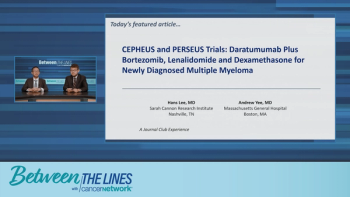
Panelists discuss updated American Society of Clinical Oncology (ASCO) data showing that 4-drug regimens significantly improve outcomes even in patients with transplant-ineligible multiple myeloma, with real-world dose modifications enabling broader use while maintaining efficacy and tolerability.
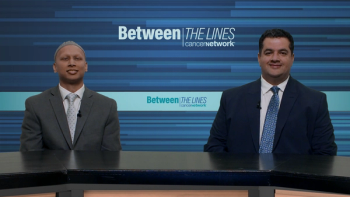
Panelists discuss how CAR T monitoring requirements have evolved from initially conservative inpatient approaches to more flexible outpatient strategies, exploring ways to reduce the burden of mandatory 30-plus-day proximity requirements while maintaining patient safety and improving treatment accessibility.

Panelists discuss updated American Society of Clinical Oncology (ASCO) data showing that adding a CD38 monoclonal antibody to frontline triplet therapy improves minimal residual disease (MRD) negativity and progression-free survival in standard and intermediate-risk multiple myeloma, while reinforcing the need for tailored strategies in high-risk patients.

Managing Ocular Side Effects of ADCs ADC therapy often leads to ocular side effects, requiring proactive management. A typical patient scenario involved mild vision issues that escalated to moderate keratopathy. Regular ophthalmologic monitoring and timely intervention allowed continuation of treatment at a reduced dose while maintaining visual function. Standard care includes a baseline eye exam, ongoing optometry visits, steroid and lubricating drops, and close coordination between oncology and eye care. Dose holds and reductions based on severity are effective in reversing toxicity while maintaining disease control. This case illustrates that with proper planning, patients can stay on effective therapy despite complications. Collaborative care between oncologists and eye specialists ensures that ocular side effects are addressed early, allowing treatment continuity and preserving quality of life.

Panelists discuss how CAR T cell therapy has transformed lymphoma treatment with multiple FDA-approved products showing 70% to 80% overall response rates and 50% to 60% complete response rates across different B-cell malignancies, while emphasizing the importance of comparing clinical trial data with real-world evidence to understand true efficacy and safety profiles.

Patients with recurrent glioblastoma who had an absorbed dose of greater than 100 Gy with rhenium obisbemeda had a median overall survival of 17 months.

According to Andrew Brenner, MD, PhD, rhenium obisbemeda can be detected via SPECT imaging and aids in the care of patients with glioblastoma.
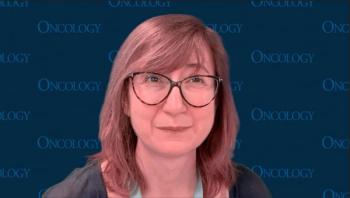
Current findings from the phase 1/2 CaDAnCe-101 trial show no predictive factors of improved responses with BGB-16673 in patients with CLL or SLL.

Breast oncologist Jade E. Jones, MD, says she tries to send patients with HR-positive BRCA-mutant TNBC to clinical trials that use PARP inhibitors.

According to Benjamin Golas, MD, PIPAC is emerging as minimally invasive laparoscopic approach for patients with peritoneal carcinomatosis.
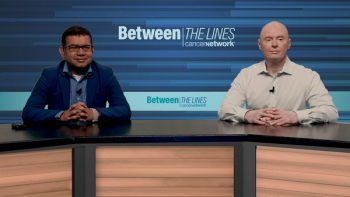
Panelists discuss how talquetamab demonstrates remarkable efficacy in patients previously exposed to T-cell redirecting (TCR) therapies, with response rates and duration comparable to treatment-naive patients.

Following progression on a CDK4/6 inhibitor, ascertaining the endocrine sensitivity of HR-positive/HER2-negative disease may inform sequential treatment.

Panelists discuss how the extended follow-up data show unprecedented overall survival outcomes, with the every-2-week dosing appearing more tolerable and leading to better long-term outcomes than weekly dosing.
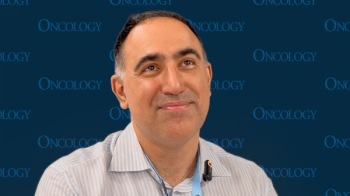
Multiple mutations and gene alterations make targeted therapy development more difficult for patients with AML, according to Amir Fathi, MD.

Manojkumar Bupathi, MD, MS; and Benjamin Garmezy, MD, discuss abstracts from the 2025 ASCO Annual Meeting that may affect genitourinary cancer care.

T-DXd improved progression-free survival over standard chemotherapy among patients with HR-positive breast cancer/triple-negative breast cancer in DESTINY-Breast04.

Panelists discussed how maintenance therapy in HER2-positive metastatic breast cancer is evolving beyond traditional dual antibody approaches, with emerging strategies incorporating targeted agents like tucatinib and endocrine therapy to personalize care and potentially delay central nervous system progression.

Panelists discussed how evolving strategies in HER2-positive metastatic breast cancer are shifting toward more personalized maintenance approaches, including the integration of CDK4/6 inhibitors and endocrine therapy, with growing interest in chemotherapy-free options for select patients.

According to Ronan J. Kelly, MD, MBA, deciding whether to give nivolumab- or durvalumab-based regimens in gastric cancers may rely on a patient’s frailty.

**Sequencing and Patient Readiness for ADC Therapy:** Panelists discuss how ADC therapy approval has reshaped ovarian cancer treatment sequencing by prioritizing these agents over traditional regimens in platinum-resistant patients with high folate receptor alpha expression, while emphasizing the critical need for patient education about unpredictable novel side effects and continuous monitoring based on patient-reported symptoms.

Panelists discuss how recent data support the use of quadruplet regimens—including anti-CD38 antibodies—even in older or moderately frail patients with newly diagnosed multiple myeloma, shifting treatment decisions from transplant eligibility to functional status and depth of response.

Panelists discuss how subcutaneous anti-CD38 monoclonal antibodies are reshaping frontline multiple myeloma treatment by improving efficacy, tolerability, and patient convenience across both transplant-eligible and ineligible populations.

Panelists discuss how the rapidly expanding ovarian cancer ADC pipeline offers promising therapeutic options with diverse payloads targeting folate receptor alpha and HER2, providing sequencing opportunities and personalized treatment approaches despite varying toxicity profiles.
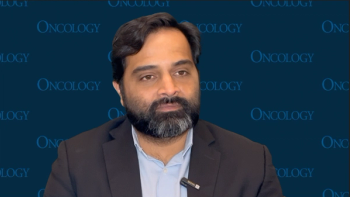
More follow-up data will better elucidate the impact of frontline use of hypomethylating agents in patients with myelodysplastic syndromes.

Five-year follow-up revealed that patients treated with nivolumab vs placebo in the phase 3 CheckMate 577 trial experienced a “doubling” of survival.

Patients treated with nivolumab in the phase 3 CheckMate 577 trial were less likely to experience progression-related treatment discontinuation vs placebo.

Panelists discuss how talquetamab targets GPRC5D, which is heavily expressed on malignant plasma cells but not normal B cells, potentially explaining lower infection rates compared with B-cell maturation antigen (BCMA)–targeted therapies.
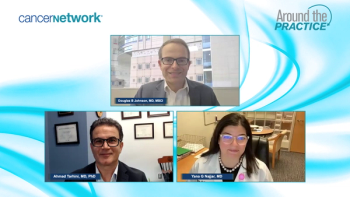
Panelists discuss how emerging advances in melanoma treatment include next-generation tumor-infiltrating lymphocyte therapy, oncolytic immunotherapy, bispecific antibodies, cancer vaccines, and neoadjuvant approaches that may allow de-escalation of both surgery and systemic therapy while improving treatment-free survival.